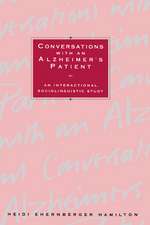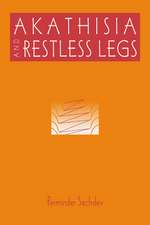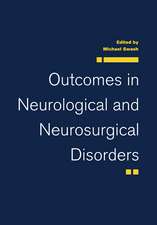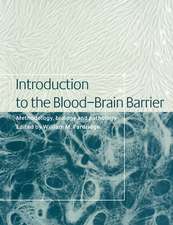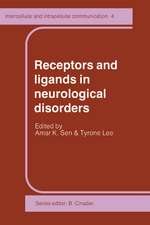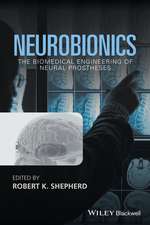Antiepileptic Drugs: Combination Therapy and Interactions
Editat de Jerzy Majkowski, Blaise F. D. Bourgeois, Philip N. Patsalos, Richard H. Mattsonen Limba Engleză Hardback – 25 mai 2005
Preț: 1420.20 lei
Preț vechi: 1494.95 lei
-5% Nou
Puncte Express: 2130
Preț estimativ în valută:
271.79€ • 295.12$ • 228.30£
271.79€ • 295.12$ • 228.30£
Carte tipărită la comandă
Livrare economică 22 aprilie-06 mai
Preluare comenzi: 021 569.72.76
Specificații
ISBN-13: 9780521822190
ISBN-10: 052182219X
Pagini: 514
Ilustrații: 16 b/w illus.
Dimensiuni: 181 x 254 x 34 mm
Greutate: 1.11 kg
Editura: Cambridge University Press
Colecția Cambridge University Press
Locul publicării:Cambridge, United Kingdom
ISBN-10: 052182219X
Pagini: 514
Ilustrații: 16 b/w illus.
Dimensiuni: 181 x 254 x 34 mm
Greutate: 1.11 kg
Editura: Cambridge University Press
Colecția Cambridge University Press
Locul publicării:Cambridge, United Kingdom
Cuprins
1. Combination therapy of diseases: general concepts Emma Lam and Philip A. Routledge; 2. Combination therapy with antiepileptic drugs: potential advantages and problems Richard H. Mattson; 3. Pharmacogenetic aspects M. C. Walker, M. R. Johnson and Philip N. Patsalos; 4. Pharmacokinetic principles and mechanisms of drug interactions Philip N. Patsalos; 5. Predictability of metabolic antiepileptic drug interactions Edoardo Spina, Emilio Perucca and Rene Levy; 6. Influence of food and drugs on the bioavailability of antiepileptic drugs C. A. Fontes Ribeiro; 7. Interactions between antiepileptic drugs Bernhard Rambeck and Theodor W. May; 8. Interactions between antiepileptic and non-antiepileptic drugs Jerzy Majkowski and Philip N. Patsalos; 9. Pharmacodynamic principles and mechanisms of drug interactions Blaise F. D. Bourgeois; 10. Methods for assessing pharmacodynamic interactions Blaise F. D. Bourgeois; 11. Experimental studies of pharmacodynamic interactions Stanislaw J. Czuczwar; 12. Clinical studies of pharmacodynamic interactions John R. Pollard and Jacqueline French; 13. Clinical studies of pharmacodynamic interactions between antiepileptic agents and other drugs Gaetano Zaccara, Andrea Messori and Massimo Cincotta; 14. Antiepileptic drug interactions in children Olivier Dulac, Elizabeth Rey and Catherine Chiron; 15. Antiepileptic drug interactions in the elderly James C. Cloyd and Jeannine M. Conway; 16. Antiepileptic drug interactions in pregnancy Mark S. Yerby; 17. Antiepileptic drug interactions in handicapped and mentally retarded patients Matti Sillanpaa; 18. Antiepileptic drugs and sex steroids Richard H. Mattson; 19. Antiepileptic drug interactions in patients requiring psychiatric drug treatment Michael R. Trimble and Marco Mula; 20. Antiepileptic drugs in non-epileptic health conditions - possible interactions Jerzy Majkowski; 21. Drug monitoring in combination therapy W. Froscher; 22. Cognitive side-effects due to antiepileptic drug combinations and interactions Albert P. Aldenkamp, Mark de Krom, I. Kotsopoulos and Jan Vermeulen; 23. Selection of drug combinations in clinical practice - current and future perspectives Jerzy Majkowski; 24. Future research - an experimental perspective R. A. Voskuyl, D. M. Jonker and R. H. Lopes da Silva; 25. Future research - a clinical perspective C. A. Fontes Ribeiro.
Recenzii
'The book contains a wealth of information both for everyday practice and for more theoretical aspect. Interactions between AED … covered in great detail. … Why is this book so important? The authors explain it in their foreword. As a substantial proportion of patients with epilepsy will not become seizure free with one drug, combination therapy is necessary and therefore often used.' Official Journal of the European Paediatric Neurology Society
Descriere
This book reviews the use of antiepileptic drugs focussing on the interactions between these drugs and between antiepileptics/other drugs.





